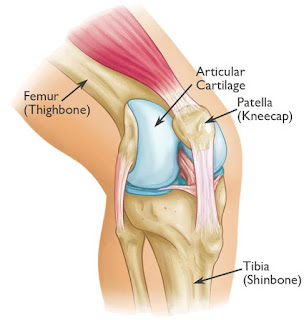AVASCULAR NECROSIS(AVN) OF THE HIP
AVASCULAR NECROSIS(AVN) OF THE
HIP
INTRODUCTION:
Avascular Necrosis is otherwise called as Osteonecrosis or Aseptic
Necrosis of the hip. AVN of the hip is a painful condition that occurs when the
blood supply to the bone is disrupted. Because bone cells die without a blood
supply, AVN can ultimately lead to destruction of the hip joint and
arthritis. Although it can occur in any
bone AVN most often affects the hip. Many people each year enter hospitals for
the treatment of AVN of the hip. In many cases, both the hips are affected by
the disease.
ANATOMY:
The hip is a ball-and-socket joint. The socket is formed by
the acetabulum, which is part of the large pelvis bone. The ball is the femoral
head, which is the upper end of the femur (thighbone). A slippery tissue called
articular cartilage covers the surface of the ball and the socket. It creates a
smooth, low friction surface that helps the bones glide easily across each
other.
CAUSES:
Ø RISK
FACTORS:
Although it is not always
known what causes the lack of blood supply, there are a number of risk factors
that can make it more likely for someone to develop the disease:
·
Injury
— Hip dislocations, hip fractures, and other injuries can damage the blood
vessels and impair circulation to the femoral head
·
Alcoholism
·
Corticosteroid
medicines — Many diseases, such as asthma, rheumatoid arthritis, and systemic
lupus erythematous, are treated with steroid medications. Although it is not
known exactly why these medications can lead to osteonecrosis, research shows
that there is a connection between the disease and long-term steroid use.
·
Other
medical conditions — Osteonecrosis is associated with other diseases, including
Caisson disease (diver's disease or "the bends"), sickle cell
disease, myeloproliferative disorders, Gaucher's disease, systemic lupus
erythematous, Crohn's disease, arterial embolism, thrombosis, and vasculitis
Ø Although
AVN affects people of all ages. It most commonly occurs between the ages of
40-65.Men develop AVN more often than women.
SYMPTOMS:
Aseptic necrosis develops in stages. Hip
pain is typically the first symptom. This may lead to a dull ache or throbbing
pain in the groin or buttock area. As the disease progresses, it will become
more difficult to stand and put weight on the affected hip, and moving the hip
joint will be painful. It takes for the disease to progress through these
stages varies from several months to over a year. It is important to diagnose
this disease early, because some studies show that early treatment is
associated with better outcomes.
EXAMINATION
AND TEST:
Increased pain during certain movements may be a sign of Avascular
Necrosis.
IMAGING
STUDY:
Ø X-rays: These scans create pictures of dense structures,
like bone. X-rays are used to determine whether the bone in the femoral head
has collapsed and to what degree.
Ø MRI:
Early changes in the bone that may not show up
in an x-ray can be detected with an MRI scan. These scans are used to evaluate
how much of the bone is has been affected by the disease. An MRI may show early
osteonecrosis that has yet to cause symptoms (for example, whether
osteonecrosis is developing in the opposite hip joint).
TREATMENT:
Although nonsurgical treatment options like medications
or using crutches can relieve pain and slow the progression of the disease, the
most successful treatment options are surgical. Patients with osteonecrosis
that is caught in the very early stages (prior to femoral head collapse) are
good candidates for hip preserving procedures.
Ø Total
Hip Replacement.
Ø Vascularized
Bone Graft.
--THE
END--









Comments
Post a Comment
Thank you for your kind words and your support.